Computer History
Under Construction
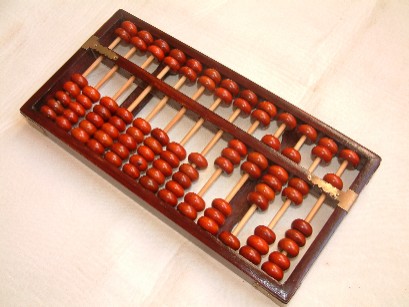
I’m occasionally told that were it not for science, I would not be sitting here at my computer typing these words and the other content of this site. They surely mean universal science and not academic science? We need to separate the two to make any sense, because using the word science usually conjures-up visions of academics. We are all able to partake in universal science, it’s what many of the names below, who did in fact give us the computer, were doing. Academic science takes on a wilful ignorance when confronted with such things and tends to seek out only the information that conforms to establishment viewpoints. Many things attributed to modern science have a history that goes back far beyond the time when the word science was first used and modern science is a babe-in-arms compared to the history of computing. Academic scientists who have made major contributions to computing are very few and far between. This is confirmed when they are compelled to invent computer science heroes as discussed in parts 1 and 2. But because we are taught by academics, it is second nature to assume that the subjects we are taught are the brainchildren of other academics. This idea, although almost universally untrue, is encouraged by those same academic teachers who themselves often mistakenly believe it. And so, this is what much of this page is about – is the computer the work of academic scientists or not? How old is the technology presented as if it were modern? Judge for yourself!
Control by Program Automata Sequence Control
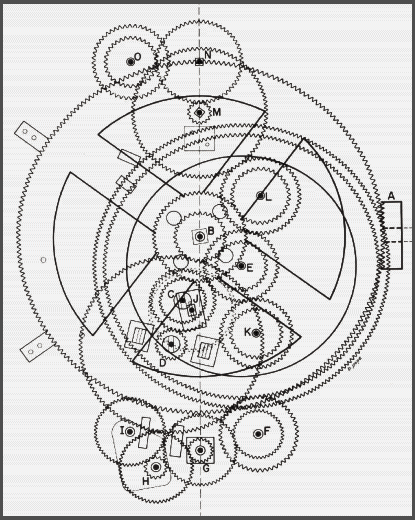
The ancient history of automata with programmed control goes way back more than two thousand years. What needs to be emphasised is that they were ‘programmable’ and its the program that makes the difference, it’s what makes computers what they are today. The transition from mechanical to electronic programming is an inevitable step and dependent on the availability of technology; its the original idea that is priceless.
Wiki: “The Antikythera mechanism made about 87 BC is an ancient analog computer designed to predict astronomical positions and eclipses for calendrical and astrological purposes, as well as the Olympiads, the cycles of the ancient Olympic Games.” The truth is that no one knows how old it is or its use, but I would guess it probably was some kind of astrological computer.
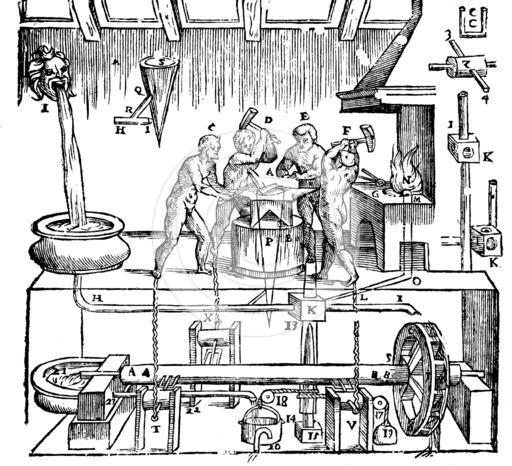
Sequence Control
mlahanas.de: “Heron of Alexandria (c. 10 – 70 AD) described a mechanism or apparatus that made use of a so called “sequence control mechanism”. This mechanism used drums in which pins and gears were mounted to control events that ‘laid ahead’, very like early computers. Sequence control gives a means to foretell the outcome of a sequence of events in advance, without influencing the outcome directly. Examples of sequence control are a music box with a drum on which pins are attached that strike against the teeth of a comb; teeth that have predefined lengths and thus possess their own tone. By striking teeth in a predefined sequence a melody will sound. Sequence control is defined as a lower generation of computer programs. The operator feeds machines like that with certain limited input and lets the machine run on its own without external control for the outcome: actions to move mechanical contraptions, music or calculations.” I’m told that the early Russian space probes used a rotating drum like the one above as part of the guidance system. This kind of control mechanism was also used to control industrial processes until the nineteen sixties or even later.
9th Century The Banu Musa brothers
Wiki: “The Banu Musa brothers also invented an automatic flute player which appears to have been the first programmable machine.” 3 “Most notable among their achievements is their work in the field of automation, which they utilized in toys and other entertaining creations. They have shown important advances over those of their Greek predecessors.
The Book of Ingenious Devices describes 100 inventions; the ones which have been reconstructed work as designed. While designed primarily for amusement purposes, they employ innovative engineering technologies such as one-way and two-way valves able to open and close by themselves, mechanical memories, devices to respond to feedback, and delays. Most of these devices were operated by water pressure.
Qaras?un, a treatise on weight balance: ‘A Book on the Description of the Instrument Which Sounds by Itself’, about musical theory.” 4
‘On Mechanical Devices’, a work on pneumatic devices, written by Ahmad. Nothing is new!
1206 Al-Jazari
aliak.com: “In 1206, Al-Jazari invented a programmable musical automaton featuring humanoid musicians and drummers which could be made to play different rhythms and drum patterns if the pegs were moved around. According to Charles B. Fowler, the automata were a robot band which performed “more than fifty facial and body actions during each musical selection.” 5

1804 The Jacquard machine and punched cards for process of manufacturing textiles. The loom was controlled by a “chain of cards”, a number of punched cards, laced together into a continuous sequence. Multiple rows of holes were punched on each card, with one complete card corresponding to one row of the design. Chains, like Bouchon’s earlier use of paper tape, allowed sequences of any length to be constructed, not limited by the size of a card.
https://en.wikipedia.org/wiki/Jacquard_loom

1650 BC
Binary Numbers
Binary numbers are used in computer mathematics because computers can only use the two switch positions – on – off. This applies to all computers, even modern computers that use millions of transistor switches. In the binary computer number representation ‘on’ is one and ‘off’ is zero. The binary system is therefore ideal for use with computers.
The most ancient use of binary for numbers and mathematics can be found in Egyptian papyri dating back to 1650 BC. Similar methods of binary use can be found in other ancient civilizations, it’s not a modern idea.

In Elizabethan times Sir Frances Bacon, Elizabeth’s spy, used binaries for secret coding ciphers, he used the letters A and B rather than numbers. A more recent find seems to suggest that he also used I and II.
Sometime around the turn of the seventeenth century Gottfried Leibniz rediscovered the binary number system whilst studying I Ching, but was largely ignored by his peers in the scientific community.
Boolean algebra
Wiki: “Boolean algebra has been fundamental in the development of digital electronics, and is provided for in all modern programming languages.”
We owe a debt of computer gratitude to George Boole, (1815 – 1864) self taught school teacher (not a scientist) and ‘The Father of Computer Science’.

gap-system.org: “In 1834 he opened his own school in Lincoln although he was only 19 years old. In 1838 Robert Hall, who had run Hall’s Academy in Waddington, died and Boole was invited to take over the school, which he did. His parents, brothers and sister moved to Waddington and together they ran the school which had both boarding and day pupils.
Boole was unable to take Duncan Gregory’s advice and study courses at Cambridge as he required the income from his school to look after his parents. Many honours were given to Boole as the genius in his work was recognised. He received honorary degrees from the universities of Dublin and Oxford and was elected a Fellow of the Royal Society (1857). However his career, which was started rather late, came to an unfortunately early end when he died at the age of 49.” 6
georgeboole.net says: “In 1837, something happened on Doncaster town fields that was to have a profound effect on the whole of the 20th century. A young teacher from Lincoln called George Boole was taking a walk when he had a moment of inspiration. He was suddenly inspired to devise and develop a system of algebraic logic that would systematically define and model the function of the human brain. Over the next few decades, Boole refined this idea and eventually published his work in a book ‘The Laws of Thought’. What he had invented has become known as Boolean Logic, and it is the basis of all computer and microprocessor systems in the world today. Without George Boole, who knows where digital technology might be in the 21st century.” 7
Wiki again: “The personal character of Boole inspired all his friends with the deepest esteem. He was marked by true modesty, and his life was given to the single-minded pursuit of truth. Though he received a medal from the Royal Society for his memoir of 1844, and the honorary degree of LL.D. from the University of Dublin, he neither sought nor received the ordinary rewards to which his discoveries would entitle him.” 8
What this is saying basically, is that he was not a scientist in the way that the word is generally understood today.

Boolean Algebra and Binary for Computers
Boolean algebra was perfected in the late 19th century by Jevons Schröder Huntington and others until it reached the modern conception of an (abstract) mathematical structure… In the 1930s, while studying switching circuits, Claude Shannon observed that one could also apply the rules of Boole’s algebra in this setting, and he introduced switching algebra as a way to analyze and design circuits by algebraic means in terms of logic gates. Shannon already had at his disposal the abstract mathematical apparatus, thus he cast his switching algebra as the two-element Boolean algebra. In circuit engineering settings today, there is little need to consider other Boolean algebras, thus “switching algebra” and “Boolean algebra” are often used interchangeably.
https://en.wikipedia.org/wiki/Boolean_algebra#History
https://plato.stanford.edu/entries/algebra-logic-tradition/#JevAlgLogBasTotOpe
Claude E. Shannon introduced the use of Boolean algebra in the analysis and design of switching circuits in 1937. Using this property of electrical switches to implement logic is the fundamental concept that underlies all electronic digital computers. Shannon’s work became the foundation of digital circuit design, as it became widely known in the electrical engineering community during and after World War II. The theoretical rigor of Shannon’s work superseded the ad hoc methods that had prevailed previously. https://en.wikipedia.org/wiki/Logic_gate#History_and_development
Logic Gates and Flip-Flops in 1886

Wiki old: “In an 1886 letter, Charles Sanders Peirce (scientist) described how logical operations could be carried out by electrical switching circuits.” The letter was based on the ideas behind William Stanley Jevons ‘Logical Piano’. Jevons an English economist and logician, was a pioneer of symbolic logic, and his paper includes a detailed explanation of his system of equational logic, which again derived from the symbolic logic devised by Boole over two decades earlier.
http://www.historyofinformation.com/expanded.php?id=591
http://www.historyofinformation.com/expanded.php?id=4090
Starting in 1898, Nikola Tesla filed for patents of practical devices containing logic gate circuits…” 18 wordiq.com: Nikola Tesla’s “1903 patents 723,188 and 725,605 contain the basic principles of the logical AND circuit element basic to all computers.” 19-20
US Patent 613,809 “Method Of And Apparatus For Controlling Mechanism Of Moving Vessels Or Vehicles”. He used them for the first examples of remote radio control.

wordiq.com: “Walther Bothe, inventor of the coincidence circuit, got part of the 1954 Nobel prize in physics, for the first electronic AND gate in 1924.” 21
And again at oscience.info: “The first electronic AND gate is invented by Walther Bothe, inventor of the coincidence circuit.” 22 that was already patented by Tesla.
It would be interesting to compile a list of previously patented ideas that won a Nobel prizes for a scientist? This is by no means the only time this has happened.
The Coincidence Circuit:
The AND Gate is a switch that switches on or off in response to a signal from elsewhere, like a relay. The Bothe Coincidence Circuit consisted of two (or more) AND Gates responding to Geiger Müller tubes. The idea is, that both switches need to closed at the same time in order to complete the circuit and thereby activate a counter or other device. In the experiment below, (not shown) one GM tube may be unshielded and the other shielded by lead and iron. If the counter is activated, it is known that the radiation has passed through the shielding with the same ease as that in the unshielded environment.

But Bothe unlike Tesla before him did not use an electronic circuit: Wiki: “The Bothe-Kohlhörster experiment demonstrated the presence of penetrating charged particles in cosmic rays. They used the same mechanical-photographic method for recording simultaneous discharges which, in this experiment, signalled the passage of a charged cosmic ray particle through both counters and through the thick wall of lead and iron with which they had surrounded the counters. Their paper, entitled “Das Wesen der Höhenstrahlung”, was published in the Zeitschrift für Physik v.56, p.751 (1929).” 23
mpg.de: “Together with Max Born, Bothe received the Nobel Prize for the development of the coincidence method, which fundamentally improved the measuring and thus the study of radiation phenomena.” 24
Again we see that Nikola Tesla had also already patented his, “Apparatus for the Utilization of Radiant Energy”, US-Patent 685,957, in November 05,1901, not forgetting his patented AND gate.
The AND gate can be seen in several of his patents. 25
nuenergy.org gives us the: Brooklyn Eagle July 10, 1932 Tesla states: “More than 25 years ago I began my efforts to harness the cosmic rays and I can now state that I have succeeded in operating a motive device by means of them. I will tell you in the most general way, the cosmic ray ionizes the air, setting free many charges ions and electrons.” 26 It seems he had succeeded in converting comic rays into usable energy and one would suppose this to be more important than the coincidence method and more deserving of a Nobel prize? Although this has nothing to do with computers it does illustrate how scientists award themselves credit for the work of others.
Of interest: It seems that both Nikola Tesla and Nobel laureate JJ Thomson of electron discovery fame were doing these same experiments as may be seen here on Youtube
We will return to this subject in the blog on energy and others.
 Bruno Rossi, 1930
Bruno Rossi, 1930
Wiki: “Bruno Rossi, at the age of 24, was in his first job as assistant in the Physics Institute of the University of Florence when he read the Bothe-Kohlhörster paper. It inspired him to begin his own research on cosmic rays. He fabricated Geiger tubes according to the published recipe, and he invented the first practical electronic coincident circuit. It employed several triode vacuum tubes, and was capable of registering coincident pulses from any number of counters with a tenfold improvement in time resolution over the mechanical method of Bothe. Rossi described his invention in a paper entitled “Method of Registering Multiple Simultaneous Impulses of Several Geiger Counters”, published in Nature v.125, p.636 (1930). The Rossi coincidence circuit was rapidly adopted by experimenters around the world. It was the first practical AND circuit, precursor of the AND logic circuits of electronic computers.” 27 Well no it was not.
Wiki editors think he invented it: “Among his (Rossi’s) contributions to the electronic techniques of experimental physics are the inventions of the coincidence circuit (Florence 1930), the time-to-amplitude converter (Cornell 1942) and the fast ionization chamber (Los Alamos, with H. Staub 1943).” 28

Wiki: “William Henry Eccles FRS (1875–1966) was a British physicist and a pioneer in the development of radio communication…in 1898, he became an assistant to Guglielmo Marconi, the Italian radio entrepreneur.” 29 See the page on wireless where the reliability of Marconi is questioned with regard to Tesla’s and other patents.
mpoweruk.com: William Henry Eccles and F.W. Jordan “1919 The flip-flop or bi-stable latch circuit a basic building block in all digital computers and logic circuits was invented by British engineers William Henry Eccles and F.W. Jordan working at the government’s National Physical Laboratory. (More inventors) 30
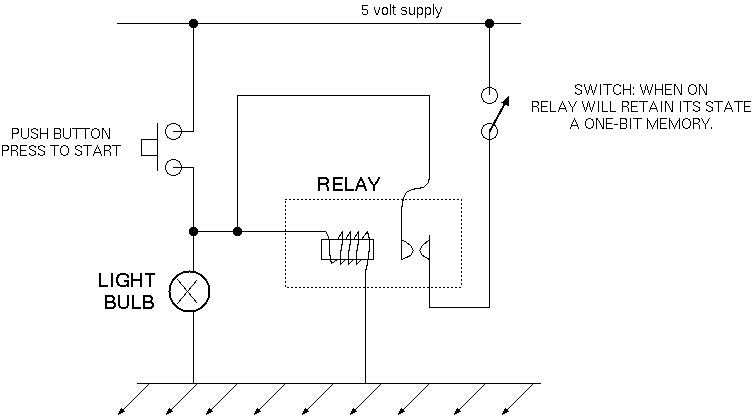
mpoweruk.com: Originally implemented with triodes, now with transistors it can remember two possible conditions or states and thus is able to store a single bit of information or a binary digit, thus enabling computers to count. This was the circuit chosen in 1958 by Robert Noyce (See below) for the first planar Integrated Circuit.
Eccles and Jordan were not Americans as reported on many US based web sites. Another Internet myth! Eccles did pioneering work in radio propagation and was a Fellow of the Royal Society (FRS). He rose to be President of the Physical Society from 1928 to 1930, and President of the Institute of Electrical Engineers (IEE) in 1926. Jordan faded into obscurity.” 31
Frank Wilfred Jordan again
The Wiki article is somewhat confusing as it begins by describing Jordan as a lecturer in physics, he then becomes an electrician: Wiki: “In 1912 he was a “lecturer in physics”, presumably at the Royal College of Science.” But at the later time of the ‘invention’ of the flip-flop (1918) he is demoted: “In 1918 he was an “electrician” at City and Guilds Technical College. There is little else known about him. This flip-flop circuit became the most important circuit in computer technology for it can be given a large number of different actions.” 32
And so we see that “the most important circuit in computing” was said to be invented by someone about whom nothing is known, having already been invented sometime before 1886 and patented in 1898? But all that matters is that some seemingly scientific names are presented.
Wiki: “Following World War I Eccles’ main interest was in electronic circuit development. In 1918 he worked in collaboration with F. W. Jordan to patent the flip-flop circuit, which became the basis of electronic memory in computers.” 33
Charles Babbage’s Difference and Analytical Engines

Wiki: “Charles Babbage, FRS (26 December 1791 18 October 1871) was an English mathematician, philosopher, inventor, and mechanical engineer who originated the concept of a programmable computer. He received an honorary degree without examination in 1814.” 10 Babbage seems never to have built a completed version of his Analytical Engine and the one above is a construction based upon his original ideas.

Augusta Ada King, Countess of Lovelace and Babbage’s programmer, in fact the first programmer. well.com: “Despite (her mother) Lady Byron’s (mind) programming, Ada did not sublimate her poetical inclinations. She hoped to be “an analyst and a metaphysician”. In her 30’s she wrote her mother, if you can’t give me poetry, can’t you give me poetical science? Her understanding of mathematics was laced with imagination, and described in metaphors.
At the age of 17 Ada was introduced to Mary Somerville, a remarkable woman who translated LaPlace’s works into English, and whose texts were used at Cambridge. Though Mrs. Somerville encouraged Ada in her mathematical studies, she also attempted to put mathematics and technology into an appropriate human context. It was at a dinner party at Mrs. Somerville’s that Ada heard in November, 1834, Babbage’s ideas for a new calculating engine, the Analytical Engine. He conjectured: what if a calculating engine could not only foresee but could act on that foresight. Ada was touched by the “universality of his ideas”. Hardly anyone else was.” 12 He was thinking of artificial intelligence, something still outside of the understanding of science and today, generally and completely misunderstood. The thoughts and ideas of Babbage and Lovelace can be discerned in the writing of Alan Turing. Mechanical artificial intelligence was a typically 18-19th century science.

It must not be forgotten that women of the day were considered to be intellectually inferior and any contemporary history will be slanted by this prejudice. 15 What we see in her is imagination used to further knowledge, something taboo in today’s science. Science expects knowledge to emerge from past knowledge and calls it induction, like using a dictionary to find a new word; unfortunately all that transpires is past knowledge.

1786 J. H. Muller’s Difference Engine, – before Babbage was born.
Wiki: “J. H. Muller, an engineer in the Hessian army conceived the idea of a difference engine decades before Babbage in a book published in 1786, but failed to find funding to progress this further. Muller conceived the idea that would later evolve into modern computers. 17 His machine was ready on 20th June 1784.” It seems that a number of non-scientists were involved in the development of the Difference Engine.
1941 “Konrad Zuse, inventors.about.com: (1910–1995) Zuse was a German civil engineer and computer pioneer (not a scientists). His greatest achievement was the world’s first functional program-controlled Turing-complete computer, the Z3, which became operational in May 1941.” (Alan Turing’s name is associated with a computer which he had no idea existed, at a time when Turing knew nothing about electronic computers because Colossus, the source of his information, did not exist!)
“Konrad Zuse (1910-1995) was a construction engineer for the Henschel Aircraft Company in Berlin, Germany at the beginning of WWII. 34
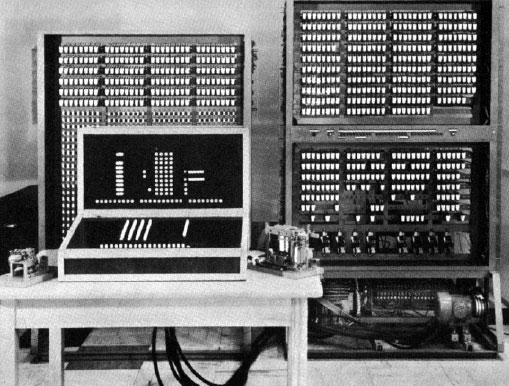
According to “The Life and Work of Konrad Zuse” (by Horst Zuse his brother) In 1941, the Z3 contained almost all of the features of a modern computer as defined by John von Neumann and his colleagues in 1946. The only exception was the ability to store the program in the memory together with the data. Konrad Zuse did not implement this feature in the Z3, because his 64-word memory was too small to support this mode of operation. Due to the fact that he wanted to calculate thousands of instructions in a meaningful order, he only used the memory to store values or numbers.
(Note the circular reasoning that makes the inventor somehow inferior to the later theorist (von Neumann) who builds upon the inventors ideas)
The block structure of the Z3 is very similar to a modern computer. The Z3 consisted of separate units, such as a punch tape reader, control unit, floating-point arithmetic unit, and input/output devices.”
“Konrad Zuse wrote the first algorithmic programming language called ‘Plankalkül’ in 1946, which he used to program his computers. It includes assignment statements, subroutines, conditional statements, iteration, floating point arithmetic, arrays, hierarchical record structures, assertions, exception handling, and other advanced features such as goal-directed execution. The Plankalkül provides a data structure called generalized graph (verallgemeinerter Graph), which can be used to represent geometrical structures. https://en.wikipedia.org/wiki/Plankalk%C3%BCl
He wrote the world’s first chess-playing program using Plankalkül.” 35 The Zuse computer was electromechanical – relays, not electronic, no tubes.

Tommy Flowers
bbc.co.uk: “Flowers’s first contact with the wartime codebreaking effort came when he was asked for help by Alan Turing, who was then working at the government’s Bletchley Park codebreaking establishment 50 miles north of London. Turing wanted Flowers to build a decoder for the relay-based Bombe machine, which Turing had developed (from an existing machine) to help decrypt the Germans’ Enigma codes. Although the decoder project was abandoned, Turing was impressed with Flowers’s work, and introduced him to Max Newman who was leading the effort to break a teletype-based cipher, called “Geheimschreiber” (secret writer) by the Germans and “Fish” by the British decoding team. This was a much more complex coding system than Enigma; the decoding procedure involved trying so many possibilities that it was impractical to do by hand. In February 1943, Flowers proposed an electronic system, which he called Colossus, using over 1800 valves (vacuum tubes). Because the most complicated previous electronic device had used about 150 valves, some were sceptical that such a device would be reliable. Flowers countered that the British telephone system used thousands of valves and was reliable because the electronics were operated in a stable environment that included having the circuitry on all the time. The Bletchley Park management were not convinced however, and merely encouraged Flowers to proceed on his own. He did so, providing much of the funds for the project himself.” (He was a post office engineer and not a scientist) http://en.wikipedia.org/wiki/Tommy_Flowers
The “project” was the first practical programmable electronic computer. The credit for this is often given to Turing, but although his contribution to the war effort code breaking was invaluable, it was Post Office engineer Tommy Flowers who built the first computer with his own funding. His brainchild Colossus was classified after WWII and his name was not mentioned until 1974 for this reason.

“Colossus was a secret until 1974 and the program’s algorithms are still secret.” It would be interesting to know why and part of the answer can probably be found in part 1 of ‘Science Stole the Computer’ ? “It was not until 1970 that existence of the Colossus was revealed publicly as the result of the USA’s Freedom of Information Act. The US government’s NSA had more than likely been given details of Colossus during the war as part payment for US assistance to the UK’s war effort.” 36
“Colossus undoubtedly made a contribution to the development of computers in Britain by showing Turing, Newman, and others what electronics could do and that knowledge turned their minds to computers immediately after the war.” The Design of Colossus THOMAS H. FLOWERS 37
Some sources mistakenly attribute the design and building of Colossus to Turing and there is no mention of Flowers. This seems to arise from an inability to conceive of the possibility that the first electronic computer was the work of a non-scientist, a denial. This is emphasised with the names of Alan Turing and John von Neumann cropping-up continuously in written works on computers, even though their contribution to actual hardware is minimal compared to the other names on this page. 38
Wiki is forced to admit: “A frequent misconception is that Turing was a key figure in the design of Colossus.” 39 Flowers was insistent that scientists played no part in the British version, and I suppose he should know? He even mentions parallel processing. 40
The Design of Colossus
Thomas H. Flowers
The academics are not the ones to pass up the opportunity to invite one so esteemed into their ranks and so… ”Tommy received an honorary doctorate from Newcastle University in 1977, and another from Dc Montfort University in Leicester. His life’s work was also acknowledged by the award of the Post Office’s first Martlesham Medal in 1980…
“One anecdote I feel I must recount here is that when someone remarked to Tommy about Alan Turing’s “great contribution” to Colossus, Tommy replied: “Alan Turing had nothing to do with it!”” 41 See also: http://www.ivorcatt.com/47c.htm
So now he can be called Dr. Flowers which makes him appear to have been an academic scientist. Hi ho!
von Neumann and Alan Turing
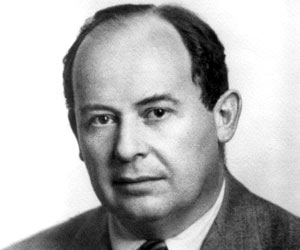
turing.org: “The Internally Stored Modifiable Program.
The breakthrough came through two sources in 1945: Alan Turing, on the basis of his own logical theory, and his knowledge of the Colossus. The EDVAC report, by John von Neumann, but gathering a great deal from ENIAC engineers Eckert and Mauchly. They both saw that the programs should be stored in just the same way as data. Simple, in retrospect, but not at all obvious at the time.” 42 I would dearly love to add some small justification for the above, but it simply does not exist. Turing’s knowledge of Colossus can only have come from the Post Office engineers Tommy Flowers et al because Turing was not present when it was designed and built. It is admitted in the text above that von Neumann acquired his information from ENIAC engineers Eckert and Mauchly. What exactly was the contribution of von Neumann and Turing, apart from theorising on that which was already up-and-running?
Wiki tells us that: “Eckert believed that the widely-adopted term “von Neumann architecture” should properly be known as the “Eckert Architecture,” since the stored-program concept central to the von Neumann architecture had already been developed at the Moore School by the time von Neumann arrived on the scene in 1944-1945.[5] Eckert’s contention that von Neumann improperly took credit for devising the stored program computer architecture was supported by Jean Bartik, one of the original ENIAC programmers.” https://en.wikipedia.org/wiki/J._Presper_Eckert
See also:
https://en.wikipedia.org/wiki/Von_Neumann_architecture#Development_of_the_stored-program_concept
It tells how von Neumann took full advantage of the so called mistake of attaching his name alone to the original paper on the EDVAC. This is unusual for Wiki as the editors usually support scientists and scientific revisionists. See the blog on the transistor
There are various claims to the first electronic computer:
The Atanasoff-Berry Computer
American sources have often cited the Atanasoff-Berry computer as the first computer: Wiki: “The AtanasoffBerry Computer (ABC) was the first electronic digital computing device. Conceived in 1937, the machine was not programmable (and therefore does not meet the criterion required by Turing), being designed only to solve systems of linear equations. It was successfully tested in 1942. However, its intermediate result storage mechanism, a paper card writer/reader, was unreliable, and when inventor John Vincent Atanasoff left Iowa State College for World War II assignments, work on the machine was discontinued.” 43
More to come…
Numbered references Computer History
Wiki is frequently used, not because it’s the best reference work but because it is the most accessible. Known Wiki mistakes are always mentioned in the text
1 http://en.wikipedia.org/wiki/Automaton
2 http://www.mlahanas.de/Greeks/HeronAlexandria2.htm
http://goldenink.com/computersandnetworks.shtml
3 http://en.wikipedia.org/wiki/Ban%C5%AB_M%C5%ABs%C4%81
4 http://en.wikipedia.org/wiki/Ban%C5%AB_M%C5%ABs%C4%81#Automata
5 http://en.wikipedia.org/wiki/Al-Jazari
6 http://www.gap-system.org/~history/Biographies/Boole.html
7 http://georgeboole.net/ …Broken link
8 http://en.wikipedia.org/wiki/George_Boole
9 http://www.gap-system.org/~history/Biographies/Boole.html
10 http://en.wikipedia.org/wiki/Charles_Babbage
11 http://en.wikipedia.org/wiki/Ada_Lovelace
12 http://www.well.com/~adatoole/bio.htm
13 http://en.wikipedia.org/wiki/Federico_Luigi,_Conte_Menabrea
14 http://en.wikipedia.org/wiki/Ada_Lovelace
http://www.fourmilab.ch/babbage/sketch.html
15 http://www.answersingenesis.org/articles/tj/v14/n1/females
16 http://en.wikipedia.org/wiki/Difference_engine
17 http://en.wikipedia.org/wiki/J._H._M%C3%BCller
18 http://en.wikipedia.org/wiki/Logic_gate
19 http://www.wordiq.com/definition/Logic_gate
20 A list of Tesla patents can be found at:
http://en.wikipedia.org/wiki/List_of_Tesla_patents
21 http://www.wordiq.com/definition/Logic_gate
22 http://oscience.info/computing-technology/logic-gates/
23 http://en.wikipedia.org/wiki/Coincidence_circuit#Bothe_and_Kohlh.C3.B6rster.2C_1929
24 http://www.mpg.de/957380/person3
25 http://www.andrewaser.ch/Publications/NikolaTeslasRadiationsAndCosmicRays.pdf
26 http://www.nuenergy.org/alt/tesla_energy.htm
27 http://en.wikipedia.org/wiki/Coincidence_circuit#Bothe.2C_1924
28 http://en.wikipedia.org/wiki/Bruno_Rossi
29 http://en.wikipedia.org/wiki/William_Eccles
38 http://www.suite101.com/content/colossus-computer-and-alanturing-a65966
http://www.turing.org.uk/turing/scrapbook/computer.html
http://en.wikipedia.org/wiki/John_von_Neumann
39 http://en.wikipedia.org/wiki/Alan_Turing#Early_computers_and_the_Turing_test
40 http://wiki.answers.com/Q/When_was_the_first_electronic_computer_invented
41 http://highfields-arc.6te.net/geninfo/pchist/tflowers.htm
42 http://www.turing.org.uk/turing/scrapbook/computer.html
43 http://en.wikipedia.org/wiki/Atanasoff%E2%80%93Berry_Computer
